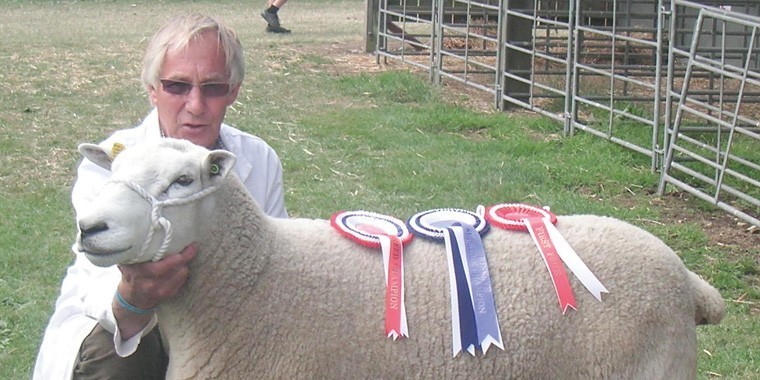This programme, established in 2014, intended to provide support and encouragement for new entrants to the sheep industry and selects 12 applicants, one each from the nine NSA regions, including Scotland, Wales and Northern Ireland, plus three from a pool of runnersup from the regional interviews.
The successful applicants join a group that will meet together for five technical, educational and social events over the course of the coming year. The events are designed to help the young ambassadors to develop their technical and personal skills, share ideas and experiences, to act as ambassadors to other young people coming into the sector and longer term be the next generation of producers driving the sheep industry forward. As I have said many times previously, the sheep industry desperately needs good, young entrants to take the sector forward, well and truly into the twenty first century.
We are undeniably an ageing sector (as is the case in most of the rest of agriculture) with an average age a lot closer to 60 than most would care to admit, and as much as we might try, as we get older we do all, in general, tend to stick with what we are comfortable with: many are stuck with twentieth and some even nineteenth century ideas and practices.
Not that we should be constantly changing and grasping every new idea that comes along. But what was really refreshing and inspiring about all of the applicants that we interviewed was how open minded and innovative they were. A number of them are coming into the industry with no family history in the sheep sector, coming in with fresh ideas, no pre conceptions and a willingness to consider any fresh ideas on their true merits and make informed decisions about how they would or would not apply them. If the youngsters that we saw in the South East region are a representative sample of young entrants to the sheep industry across the country then we do, truly, have a cause to celebrate. Their enthusiasm, commitment, pioneering spirit and capacity for novel ideas will ensure that the industry is in safe hands as we move forward.
Another reason for growing confidence in the sheep sector is that as the global market for red meats – including lamb – grows sheep flocks in some of the big sheep producing countries are declining. Since 1990 the New Zealand national flock has been in steady decline from a peak of 70.3 million in the 1980s to 29.6 million last year. In Australia we have seen a similar trend dropping from 170 million to about 72.2million last year.
Although the raw figures do present a rather distorted picture, New Zealand sheep keepers, driven by the desire to reduce the costs and efficiency of production, are producing a lot more per ewe than they were 30 years ago and the Australians have shifted the emphasis of a significant proportion of their sheep flock away from the traditional focus on wool production to sheep meat production, so that Australia is now a big player in the global lamb and sheep meat market.
It will not all be easy. If we are going to extend our influence in the global sheep meat market we will still need to be competitive, and we will also need to adopt appropriate strategies to cope with the vagaries and volatility of the global market. This is certainly something that producers in other sectors have been compelled to adapt to: the price that arable producers receive for their wheat, for example, has very little to do with the supply and demand situation within the UK. Harvest results in North America can have more of an impact on producer prices than what is happening at home.
Price volatility will almost certainly be a consequence of widening export markets for our lamb and sheep meat, so we do need to look at what we are doing and how we are doing it. Forage is still our cheapest feed and after labour, feed is still for the majority of producers our biggest cost. We need to look to ways of making more effective use of forages, including the more efficient and effective use of grass, both grazed and conserved, the use of alternative forage crops, both traditional and novel to extend our grazing seasons. Performance, in terms of lambing percentage in particular cannot continue to be the god of producers, but the costs per unit of output. How many producers persist in chasing 200% lambing regardless of the costs – particularly of supplementary feeding – when a lower level of performance won rather more cheaply could produce a significantly enhanced bottom line. We certainly have some causes to celebrate, but we also have some cause for considered caution.




